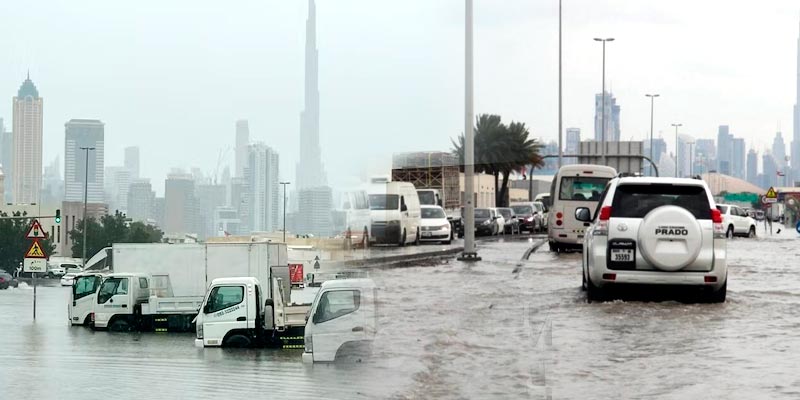Heavy rainfall, storms, and widespread flooding hit Southwestern Asia, notably the United Arab Emirates, in April, causing significant economic and insured losses estimated to potentially reach into the hundreds of millions of USD, according to Aon.
The UAE’s National Center for Meteorology recorded a record-breaking 24-hour rainfall of 254.8 mm (10.03 inches) at the Khatam Al Shaklah station.
The rains were the heaviest experienced by the United Arab Emirates in the 75 years that records have been kept. They brought much of the country to a standstill and caused significant damage.
Flooding trapped residents in traffic, offices and homes. Many reported leaks at their homes, while footage circulated on social media showed malls overrun with water pouring from roofs.

A highway through Dubai was reduced to a single lane in one direction, while the main road that connects Dubai with the capital Abu Dhabi was partially closed in both directions.
In Dubai, the UAE’s most populous emirate, traffic remained disrupted even as public transportation services resumed.
Street closures, detours and partially submerged roads caused heavy congestion, with some cars driving towards oncoming traffic in effort to avoid flooded areas.
Dubai was severely affected by heavy rainfall on April 15-16, receiving 142 mm (5.59 inches) in just one day – equivalent to a year’s worth of rain and the heaviest downpour since records began in 1949.
The Dubai International Airport was completely flooded, leading to over 1,200 cancelled flights and multiple aircraft submerged in floodwater, potentially resulting in significant material losses. Dubai’s transportation services suffered, with numerous cars, homes, and malls inundated in the city centre.

Vehicles, including buses, were abandoned on streets and some could be seen submerged in water. In Abu Dhabi, some supermarkets and restaurants faced product shortages, unable to receive deliveries from Dubai.
Dubai airport had yet to resume normal operation after the storm flooded taxiways, forcing flight diversions, delays and cancellations.
Additionally, power outages and water shortages were reported in many parts of the country.
Heavy rainfall also triggered deadly flash flooding across northern Oman between April 14-16, as well as in Afghanistan and Pakistan.

Thunderstorms, heavy rainfall, and flash flooding affected other countries in the region, including Saudi Arabia, Qatar, Iran, Bahrain, Kuwait, and Yemen.
Initial assessments from the area suggest a significant impact on property, infrastructure, and agriculture that will likely run to at least hundreds of millions of USD. Insured losses will be notably lower due to relatively low insurance penetration.
The severe weather event has resulted in at least 166 fatalities, hundreds of injuries, and significant damage to thousands of buildings, local infrastructure, and agriculture.
Given the ongoing damage assessment and the notable damage caused over a large area, it is still too early to determine the estimated economic impact across the affected region.



 by
by 


